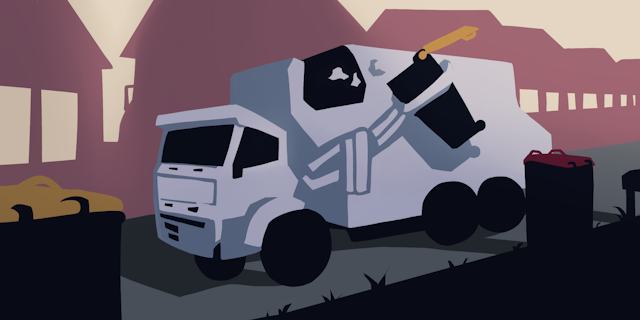This is an article from Curious Kids, a series for children. The Conversation is asking kids to send in questions they’d like an expert to answer. All questions are welcome – serious, weird or wacky!
Where do my recycled items go? - Lee, age 6, Darwin.
Great question, Lee. You’re not the only one wondering about this.
Many people have no idea where their recycling items go or what happens after the items are put into the recycling bin, so I am really glad you asked the question.
The short answer is, once a fortnight, someone at home will place the recycling bin out for a truck to drive past and empty it. Once the truck is full it then travels to what is called a Materials Recovery Facility or MRF (we say it as “merff”). At the MRF, the load from the truck is tipped onto a conveyor belt where the recyclables are sorted into different types.
Read more: Curious Kids: why doesn't lava melt the side of the volcano?
What happens to your recycling
Using a combination of different machines and sometimes people, the recyclable rubbish from your house is sorted into different materials such as paper, cardboard, plastics, metals and so on. Once sorted, each type of material is then put into containers or baled (that’s where a big crushing machine squashes all the recyclable and waste materials into a cube).
There are many different types of machinery at a MRF. There can be magnets to attract metals, air blowers that blow paper out, round drums that have a range of holes that allow different-sized pieces of plastic to fall through in different places, and centrifuges that sort other materials (heavy items fall to the bottom and lighter ones go to the top).
You can see some pictures of what a MRF can look like here.
Where does it all go?
At the end of all of this, the materials that cannot be recycled are then put into bins and taken to a landfill - an area set aside to receive and bury waste.
This is why it is important to only put what is allowed into your recycling bin.
For example, if you put bottles and cans into a plastic bag, the recycling process at the MRF does not allow the bag to be opened and sorted, which means that the things in the bag can’t be sent for recycling. That means they will go to the landfill instead, which is a waste of resources and not good for the environment.

As mentioned, materials that are sorted and can be recycled are either placed into bins or baled. These are then sent to factories where the next step happens. For example, your paper might be made into toilet paper or paper for a printer. Plastics can be made into other plastic things, such as bottles.
Read more: Curious Kids: why does rain only come from grey clouds?
For some materials, this processing happens in Australia. Other materials might be shipped overseas.
What you can do
To help it all work smoothly, you must ensure that only recyclable stuff goes into your recycling bin. Also have a look at buying items that have been made from recyclable materials. It is much kinder to our environment.
If you would like more information, you can contact your local council or look on their website. It will tell you what can be placed into your recycling bin at home, as well as a lot of other information on managing other waste materials. You may also like to talk to your school about arranging a visit to a MRF.
Hello, curious kids! Have you got a question you’d like an expert to answer? Ask an adult to send your question to us. You can:
* Email your question to curiouskids@theconversation.edu.au
* Tell us on Twitter by tagging @ConversationEDU with the hashtag #curiouskids, or
* Tell us on Facebook

Please tell us your name, age and which city you live in. You can send an audio recording of your question too, if you want. Send as many questions as you like! We won’t be able to answer every question but we will do our best.

